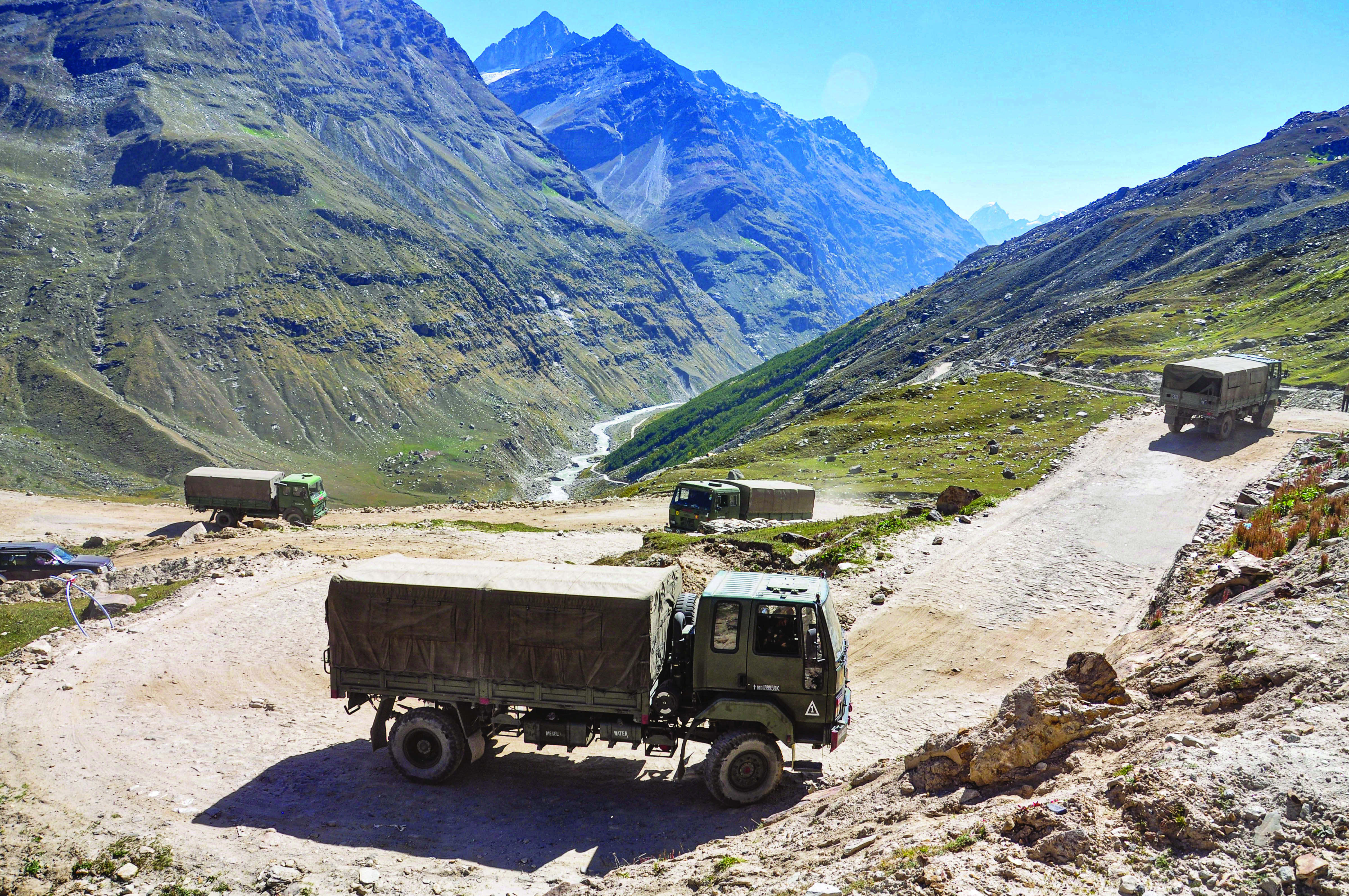India, China finalise disengagement pact for Depsang Plains, Demchok in Eastern Ladakh

New Delhi: India announced on Friday that a long-anticipated “disengagement pact” between India and China has been formally finalised for two key “frictionless” sectors in Eastern Ladakh. This accord, which comes after years of a tense military standoff along the contested border, aims to restore stability in regions that have been a focus of heightened military friction since 2020. According to the sources, India and China have begun troop disengagement, and the process is expected to conclude by October 28-29, marking a crucial move toward easing one of the most prolonged confrontations along the Line of Actual Control (LAC). Under this agreement, both nations have committed to coordinated patrols starting October 29, a move designed to enhance monitoring of their respective territories and manage the challenging, undefined border. An Army official involved in the planning of this historic pact stated, “We will keep informing each other regarding patrolling. We are going back to the position of April 2020.” The return to pre-standoff conditions represents a critical milestone in efforts to resolve the prolonged tensions that have strained India-China relations since the violent clashes in Galwan Valley in June 2020.
This recent pact specifically addresses the two crucial areas of friction in Eastern Ladakh—the Depsang Plains and Demchok—while leaving out buffer zones and other previously tense sectors. According to the sources, the agreement allows both countries to dismantle any temporary establishments within these contested locations and restore traditional patrolling routes. “Adequate measures have been taken,” sources confirmed, adding that conversations are ongoing to address various sectors across the LAC. While troops will initiate coordinated disengagement, both Indian and Chinese forces will continue to maintain a controlled presence, remaining stationed at their current posts. The announcement of this latest agreement follows months of intensive diplomatic and military dialogue, which culminated in what officials describe as a “patrolling arrangement” meant to anchor the broader LAC disengagement framework. Foreign Secretary Vikram Misri has been particularly vocal about the extensive negotiations that have taken place between the two countries at multiple forums in recent weeks. Lt General MV Suchindra Kumar, Northern Army Commander, underscored the progress achieved through this collaborative effort, stating: “As a result of these discussions, an agreement has been arrived at on a patrolling arrangement along the Line of Actual Control in the India-China border areas, leading to disengagement and a resolution of the issues that had arisen in these areas in 2020.”
The formal announcement of this breakthrough earlier in the week was soon followed by a high-level meeting between Indian Prime Minister Narendra Modi and Chinese President Xi Jinping, held on the sidelines of the BRICS summit in Kazan, Russia. While India has taken a clear and public stance on the agreement, the Chinese government has been more reserved. A spokesperson from the Chinese Foreign Ministry remarked that India-China relations “are about more than the boundary situation.” A core element of the new agreement is the coordinated patrol plan, which aims to normalise border management practices, allowing Indian troops to patrol up to their perceived boundary line, despite the ongoing dispute over the exact location of the LAC. Traditionally, Indian troops have marked their presence—often leaving behind a cigarette packet or matchbox of Indian origin—at key points along their patrol before returning to base. This informal protocol underscores an understood, though unofficial, boundary that has persisted for years in this rugged and challenging terrain. As both sides work to move toward a cautious détente, they are bound by the established protocols in Article 4 of the 2005 border agreement, which guides conduct in cases of accidental face-offs. This clause emphasises restraint, mandating that both sides avoid any action that could lead to an escalation of tensions. The guidelines further clarify that neither side should place markers or engage in any actions that could provoke a response in sensitive border areas.
The agreement to disengage in Depsang and Demchok reflects a strategic approach focused on incremental progress, with no immediate plans to revisit other flashpoints such as Galwan Valley, Pangong Tso’s north and south banks, or the Gogra-Hot Springs region. The Indian Army’s approach highlights a strategy of controlled, selective disengagement, which prioritises addressing immediate points of friction while allowing time to gradually address other complex areas. Foreign Secretary Misri has expressed optimism that the current arrangements can effectively prevent violent clashes, such as those seen in Galwan in 2020, which resulted in the deaths of 20 Indian soldiers, including a colonel, and at least four Chinese soldiers. The foreign secretary stressed the importance of close monitoring of the arrangement to avoid similar incidents, highlighting that proactive measures and ongoing communication will be critical to maintaining peace along the LAC. This latest pact is expected to serve as a foundation for long-term trust-building efforts between the two nations, which will be essential if they are to complete the larger three-step process of disengagement, de-escalation, and the eventual de-induction of troops from sensitive zones. Although the framework has the potential to lead to a gradual normalisation of relations, military experts caution that the entire process could take years to complete fully. In the meantime, Indian officials view the recent agreement as a pivotal moment in India-China relations, offering a unique opportunity to turn the page on one of the most contentious chapters of recent history along the LAC. The commitment to mutual disengagement has not only alleviated immediate tensions but also laid a tentative foundation for future cooperation, marking a possible shift in the relationship between the two countries. General Officer Commanding-in-Chief, Northern Command Lt General M V Suchindra Kumar, noted that the disengagement arrangement, bolstered by extensive diplomatic and military conversations involving Foreign Secretary Misri, is a promising step forward. He acknowledged that achieving trust and stability in the region is a gradual process but one that is essential to ensure peace and prevent the escalation of hostilities in these strategically sensitive areas.



